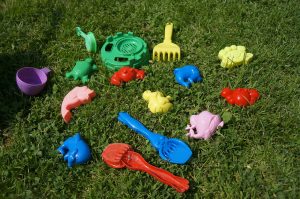How to Prepare Your Lawn for Winter
By Victor Wang
The winter season can do a great deal of damage to your lawn. Frigid temperatures, ice, and snow can wreak havoc on your yard. You can avoid problems later by preparing your lawn for winter.
Remove Debris

After a busy summer, your lawn has accumulated more than its fair share of toys, furniture, and outdoor games. Make sure to remove these items before winter arrives to keep the grass alive. Allowing dog bowls, frisbees, large branches, and woodpiles to sit on the grass over the winter will kill the grass and produce more problems come spring.
The same goes for leaves and any dead plants. A pile of soggy leaves invites snow mold and pests over the winter. Don’t wait until the leaves are knee-deep. Get the rake or leaf-blower out every weekend until the trees are bare.
Cover Bare Spots
Thinning or bare spots in the lawn need attention before winter arrives. These areas are not only unsightly, they become a breeding ground for weeds. Rake these bare patches and spread grass seed to help provide a layer of coverage. Water the seeds when it’s warm enough to encourage them to germinate. The snow will also provide moisture, giving you a lush, thick lawn when the spring thaw arrives.
Aerate the Lawn
 Caring for your lawn’s root system is just as important as caring for the grass itself. Make sure you give your lawn the chance to absorb water and essential nutrients by aerating the lawn. It breaks up compacted soil and allows the grass roots to breathe. The best time to aerate is in the fall, before the first winter frost.
Caring for your lawn’s root system is just as important as caring for the grass itself. Make sure you give your lawn the chance to absorb water and essential nutrients by aerating the lawn. It breaks up compacted soil and allows the grass roots to breathe. The best time to aerate is in the fall, before the first winter frost.
By using liquid aeration, you’ll avoid the messy dirt plugs and avoid damaging your sprinkler system.
Add Compost, Fertilizer
In Colorado, where cool-season grasses are the norm, an application of fertilizer in the fall will help your lawn weather the coming snow and give it the strength to fight off the spring invasion of weeds.
Compost is another option that will add nutrients to the soil. Adding compost in the fall gives it a chance to break down over the winter. Providing a food source for the grass will allow your lawn to bounce back more quickly in the spring.
Use Natural Mulch
![]()
After you rake or blow leaves, don’t discard them. Mulched leaves provide a natural source of nitrogen for your lawn. You’ll also support the local environment by naturally recycling leaves instead of sending them to the local landfill. Mow over the pile of leaves, using the highest setting on your mower, then spread them over the lawn.
Preparing your lawn for the winter season is an essential part of keeping your lawn thick and green year-round. No matter how warm or cold this winter turns out to be, your lawn needs help to survive and thrive.
Victor Wang grew up in Central California plucking tomato worms from his mother’s heirloom tomato garden and is now a master gardener and freelance writer. His areas of expertise include landscaping, pest control, and, of course, gardening.







